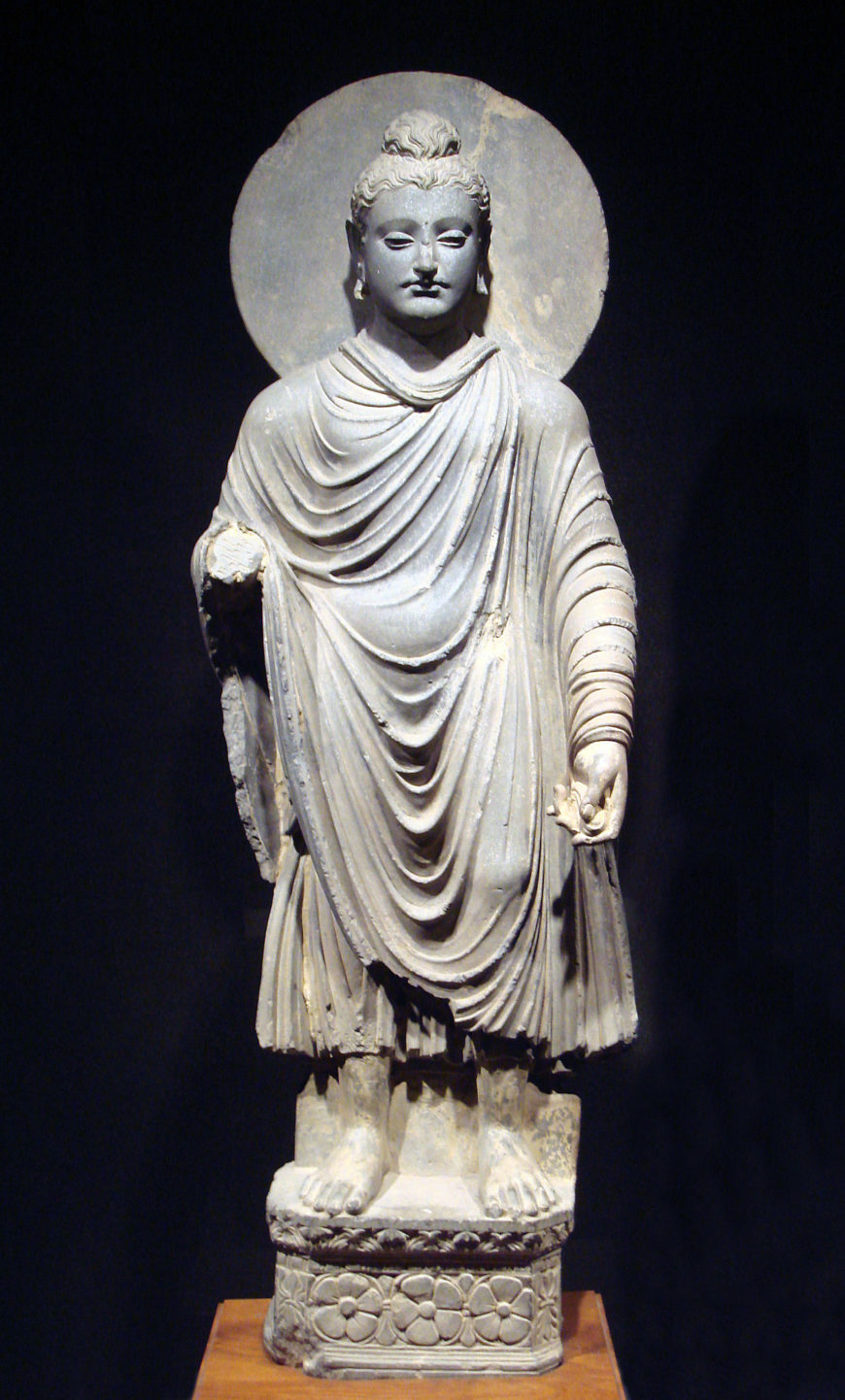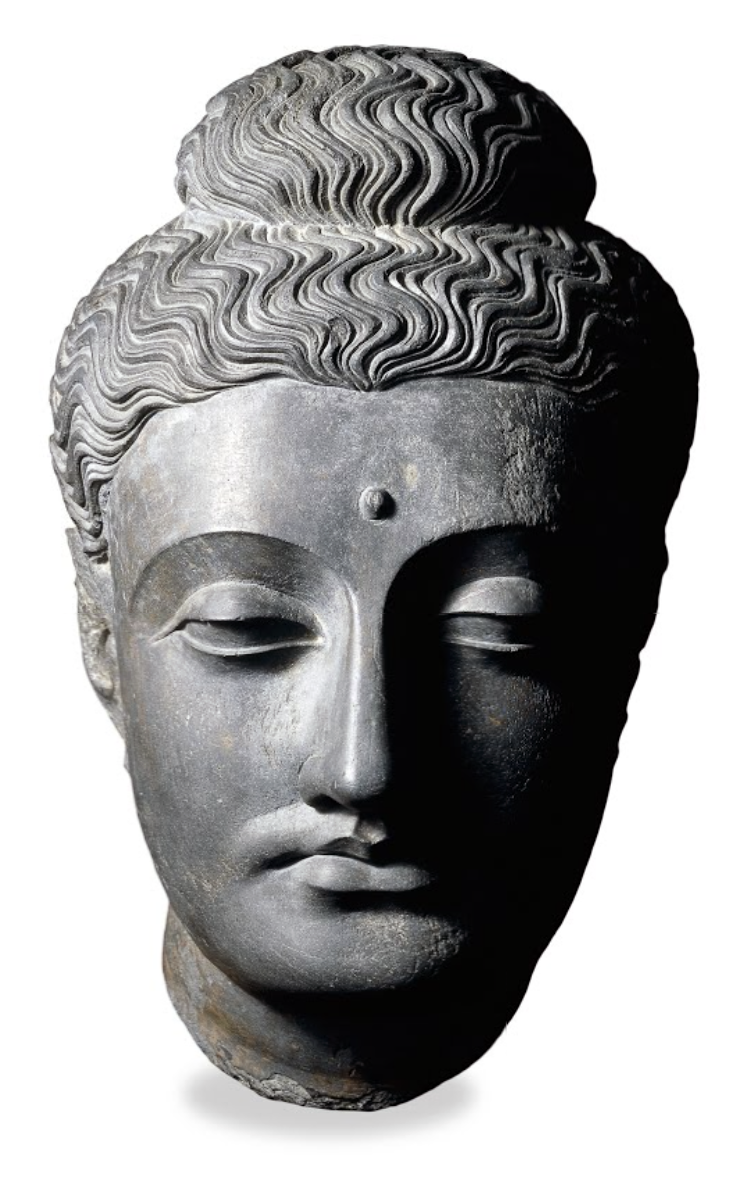
Buddha from Gandhara, c. 2nd–3rd century C.E., Gandhara, schist (Tokyo National Museum, photo: public domain)
When the Buddha’s mother was expecting, the family decided that she should proceed north to the hills to give birth. This she did, but gave birth along the way, in a place called Lumbini in the foothills of the Himalayas. The site of Lumbini is in modern-day Nepal.
He is, therefore, also called Shakyamuni, or ‘sage of the Shakyas’. While it is clear that the Buddha was an historical personage, the precise dates of his life remain uncertain. Sri Lankan texts suggest that he lived between around 566 and 486 B.C.E., while Tibetan sources indicate around 448 to 368 B.C.E. These dates are thus still the subject of scholarly debate.
Whatever the dates of the historical Buddha himself, it is clear that by the third century B.C.E. his ideas and teaching had gained widespread currency in South Asia. Buddhism was promoted under the imperial patronage of the Mauryan emperor Asoka (reigned about 265–238 B.C.E.), who sponsored monks to proselytize abroad, carrying the Buddha’s teaching to Sri Lanka, China and the North western region of Gandhara from where this sculpture originates.

Title: Head of the Buddha, c. 100–300 C.E., Kushan dynasty, dark grey schist, made in Gandhara, Pakistan, 38.7 x 23.50 (© Trustees of the British Museum)
Positioned at the ‘crossroads of Asia’, Gandhara has always been an ancient transit zone; it was certainly well known to the Greeks in the fifth century B.C.E. Though the conquest of Alexander the Great was short-lived (329–325 B.C.E.), subsequent Indo-Greek kings held sway for another three centuries until the early years of the first century C.E. Thereafter the region fell to the Shakas, Parthians, and the Kushans. This sculpture, like most of the Buddhist art from Gandhara, can be dated between the first to fifth centuries C.E. As a result of the various cultures that either settled or moved along these trade routes, the sculptures have taken on a distinctive style, combining Graeco-Roman, Indian, Chinese, and Central Asian influences.
© Trustees of the British Museum
Additional resources:
Learn about Mathura




